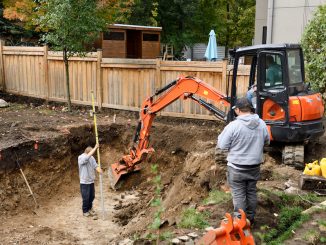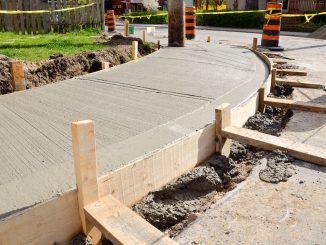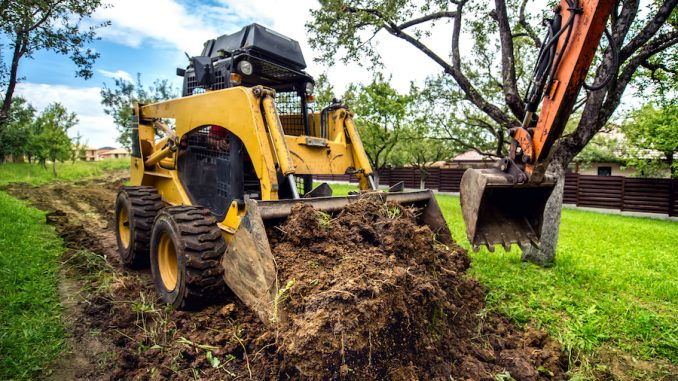
View the complete article here.
How much should you charge for your landscaping services? It can be tough to determine what to bill, especially when you’re starting out.
But with a little bit of research and some basic math, you can come up with a price that will cover your costs and give you a reasonable profit margin.
So how do you go about pricing your landscaping jobs? Let’s take a look!
How to Set Perfect Prices as a Landscaping Contractor
In order to set the right price for your landscaping services, you need to consider your operating costs as a business, your ideal profit margin, and your client’s budget.
When setting the price, it is important to remember that you want to attract customers while also making a profit.
To do this, you need to start by evaluating\ your costs.
Labor costs are one of the most important aspects to consider when pricing a landscaping job. The type of workers you use will greatly affect your labor costs. There is a big difference in pay between specialized and general laborers. If you need to use additional workers, make sure to find out the going hourly rate for each type of worker in your area.
In addition to labor costs, you also need to factor in the cost of materials. If you are providing the materials yourself, be sure to factor in the cost of tools and various equipment, as well as the price of dirt, stones, mulch, and any other necessary materials.
Another important aspect to consider is whether or not the potential contract synergizes with other landscaping projects. If the job is physically close to your headquarters or another job site, there is a good chance that you can save on labor and transportation costs.
Similarly, if you can share materials with other nearby jobs, you will be able to further reduce your costs.
Consider, too, the type of pricing you want to offer. Most landscapers charge by the project – a fixed rate – which can give the client peace of mind in knowing that they will only pay one cost that is not dictated by the number of hours you work. An hourly rate, though, can provide more flexibility for certain clients.
Finally, if you think you might be able to win additional contracts or consistent work from the client, be sure to factor that into your bid. By taking all of these factors into consideration, you will be able to submit a well-informed bid that stands a good chance of being accepted by the client.
You should be sure to price your services so that your customers feel like they are getting value for their money. If you can do this, then you will be able to set the right price for your landscaping services.
How to Price Landscaping Jobs: Step by Step
As a landscaper, you know the value of a well-manicured lawn and beautiful garden. But how do you calculate how much to charge for your services? The process of pricing a landscaping job can seem daunting, but it doesn’t have to be. Here are some simple steps to follow.
1. Start By Talking to the Client On Site
When it comes to pricing a landscaping job, the first step is always to talk to the client. This is essential in order to get a clear understanding of the scope of work and the client’s expectations.
Furthermore, meeting with the client on site allows you to get a better sense of the property and any potential obstacles.
By taking the time to talk to the client and survey the property, you can ensure that you are providing an accurate estimate.
2. Consider Materials Cost
The next step in pricing a landscaping job is to consider the cost of materials. This includes any and all items you will need for the job, such as compost, lighting, cement, seeds, plants, mulch, or stone.
Don’t overlook a single thing, even if it’s a purchase that you will use for other jobs as well.
Once you have your list, work out how much it all costs you. This will give you a good starting point for pricing your landscaping jobs.
3. What Are Your Overhead Costs?
Overhead is a broad term that covers expenses necessary for doing business, like rent, marketing, office utilities, subscriptions, and vehicle payments.
And don’t forget about insurance – you always want to have insurance in place in case of a mishap. The ability to produce a Certificate of Insurance is a phenomenal selling point when you deliver your bid, since it shows a client that you have a great deal of professionalism.
By taking into account all of your overhead costs, you can develop an accurate bid for your next landscaping job.
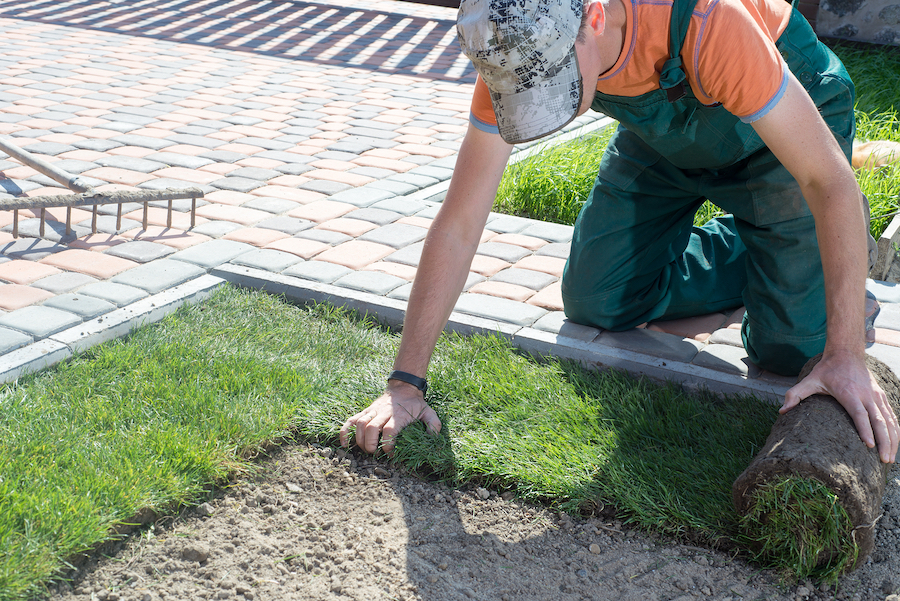
4. Do You Need Subcontractors?
After you’ve determined what the job entails, your next step is to consider if you need subcontractors. There are several benefits to subcontracting work, including being able to price the job more competitively and increased flexibility in terms of timing and project management.
However, there are also some potential drawbacks to consider, such as the need to build trust with the subcontractor and the possibility of increased costs if the project runs over schedule.
Ultimately, the decision of whether or not to use subcontractors will come down to a balancing of these factors. If you’re confident that you can manage the project effectively and remain within budget, then subcontracted work may be the way to go.
However, if you’re unsure about either of those things, it may be best to steer clear. Either way, this is something that is important to consider before you deliver the bid to the client – and especially before the job begins.
5. Estimate Labor Costs
One of the most important elements in pricing a landscaping job is estimating labor costs. This can be difficult to do, as it depends on a number of factors, including the type of work to be done and the experience level of the workers. If you have an established landscaping business with an established crew behind you, it might not be too difficult for you to get an idea of labor costs.
If you’re new to the business, though, it can be more of a challenge.
However, there are a few ways to get an accurate estimate.
First, check with other landscapers in your area to see what they charge for similar jobs. Second, make use of online tools that can help you estimate labor costs based on the type of work and the number of workers needed.
6. Add a Mark-Up
Any business needs to make a profit to stay afloat, and the landscaping business is no different. After you have calculated the cost of materials and labor for a job, your next step is to add a mark-up.
This mark-up will cover overhead expenses such as insurance, rent, and marketing, as well as provide a profit for the business. The size of the mark-up will vary depending on the type of job and the overhead costs of the business.
For example, a small residential job might have a mark-up of 10-15%, while a large commercial job might have a mark-up of 30-40%.
By carefully calculating your costs and adding an appropriate mark-up, you can ensure that your landscaping business is profitable and sustainable in the long term.
7. Deliver the Final Price and Estimate in Your Bid
Once you have a good understanding of the job at hand, you can begin to put together a bid.
The next step is to deliver the final price and estimate to the client and make any necessary adjustments.
Finally, it’s important to stay flexible and be willing to negotiate if the client attempts to haggle.
What Do Most Landscapers Charge Per Hour?
Most landscapers charge by the project rather than by the hour. This is because charging by the hour hurts the landscaper if they finish the job ahead of schedule and also tends to make the client uncomfortable because it’s unclear upfront how much they will actually need to pay.
Unforeseen issues can also affect the timeline of the project, so it’s best to avoid charging by the hour.
The cost of a landscaping project depends on the size of the yard and the type of work being done. For example, sod installation is typically less expensive than designer landscaping.
Overall, landscaping costs range from $5 to $35 per square foot on average. While your prices can certainly be higher or lower than that, depending on where you live and the amount and scope of work that’s involved, this is a good ballpark estimate for you to work with.
A Few Unique Landscaping Bid Items to Consider
In any type of construction project, it is important to create a detailed and accurate bid. This document will outline the estimated costs of labor, materials, and other expenses associated with the project. For a landscaping project, there are a few unique bid items that should be considered.
Pricing Commercial Landscaping Jobs
Pricing commercial landscaping jobs can be a daunting task, but there are some key things to keep in mind that will help make the process simpler.
First and foremost, it’s important to have a portfolio that showcases your previous work. This will give potential clients an idea of the quality of your work and what they can expect if they choose to hire you.
In terms of pricing, it’s often best to provide businesses with an itemized quote so they can see exactly what they’re paying for. This is a great idea for residential customers, too, but is even more of a priority with commercial clients who may have to present your bid to other stakeholders, like a board of investors, in order to get the project approved.
And finally, remember to always be professional when dealing with commercial clients – after all, first impressions are key!
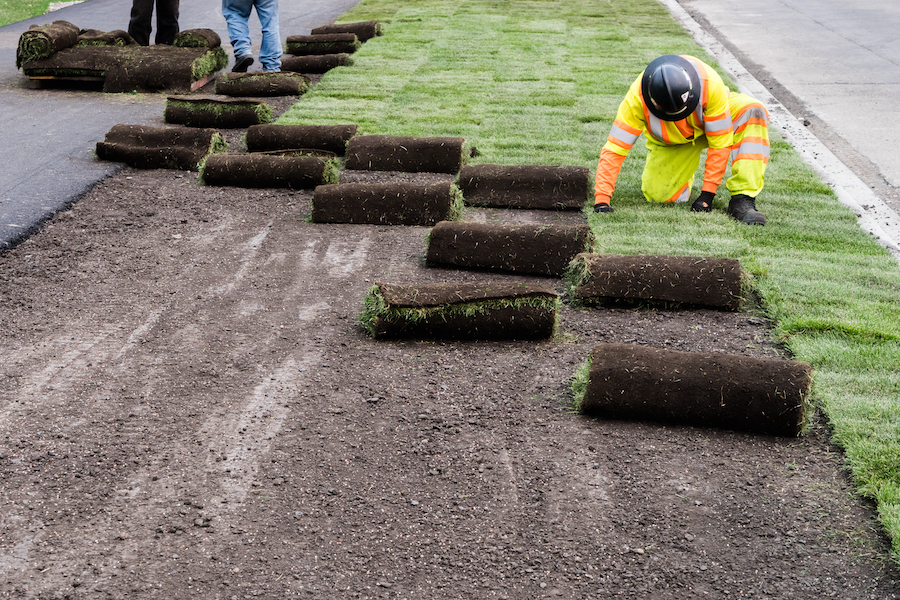
How to Price Lawn Care Jobs
Many landscapers offer holistic lawn care service that include the care of a lawn over the course of several months, a full season (spring to fall) or even years. You might bill these services via appointment or on a daily, monthly, or weekly cycle.
They might be lower prices than building an entire landscape plan but higher than one-off tasks like planting a tree.
The first step in pricing a lawn care job is to assess the scope of work.
Are you simply mowing the lawn, or are you also responsible for watering, fertilizing, and other aspects of lawn care?
The more involved the job, the higher the price should be. Once you have a clear understanding of the work involved, you can begin to develop a pricing strategy.
One option is to charge a flat fee for each appointment. This is simple and easy to understand, but it may not reflect the true cost of the job. Another option is to charge a monthly or weekly rate. This approach captures all of the costs associated with the job, but it may be harder for customers to budget for.
Ultimately, the best pricing strategy is the one that reflects the true cost of the job and provides value for both you and your customer.
Pricing Mulching Jobs
Mulching is another unique landscaping job that you may not want to include in your regular quoting process. It’s an isolated task performed infrequently so it tends to make more sense to price it based on factors like square footage of mulch, materials, and project-based labor.
To start, you’ll need to determine the square footage of the area that needs to be mulched. This will help you calculate how much material you’ll need, and also give you an idea of the scope of the project.
Next, you’ll need to choose your mulch material. Some common options include wood chips, leaves, and straw.
Once you’ve selected a material, you’ll need to decide whether you’ll charge by the hour or by the project. If you’re experienced with mulching, you might opt for an hourly rate.
However, if you’re new to the task or have a large project, it’s probably best to charge by the project. In either case, be sure to give your customer a detailed estimate before starting work.
Why Accurate Pricing is Important if You’re a Landscaper
In business, whether you’re a solopreneur or you have employees, pricing your services accurately is critically important. If you charge too little, you won’t be able to make a profit. And if you charge too much, you won’t get the jobs.
As a landscaper, your potential customer base is large – everyone who owns a home or commercial property needs landscaping services at some point. To get and retain customers, it’s essential that your prices are in line with what others in your area are charging for similar services.
In order to price your services accurately, do some research on your competition and find out what they’re charging. You can also check with local businesses that use landscapers to find out what they pay.
Once you have an idea of the going rate, you can adjust your prices accordingly. By pricing your services accurately, you’ll be more likely to get the jobs you want and make a good profit.
Final Thoughts
Pricing landscaping jobs can be tricky. You want to make sure you are making a profit, but you also don’t want to price yourself out of the market.
One of the most important things to remember when pricing jobs is to be fair to both the customer and the business. The best way to price a landscaping job may vary depending on the individual business.
With these tips in mind, you can evaluate your costs, set appropriate prices, and run a highly profitable landscaping business.
View the complete article here.
What factors should be considered when pricing landscaping jobs?
When pricing landscaping jobs, factors such as the size of the area, complexity of the job, materials required, labor costs, and the client's budget should be considered. It's also important to account for indirect costs like equipment maintenance and transportation.
How can a landscaping contractor accurately estimate the cost of a project?
A contractor can accurately estimate the cost of a landscaping project by doing a thorough site evaluation, understanding the client's needs and expectations, estimating the cost of materials and labor, and adding a profit margin to cover the business overheads and to make a reasonable profit.






































